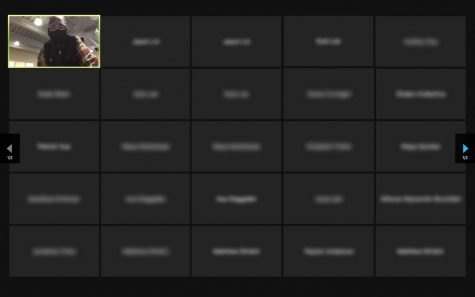P.E. classes continue to face obstacles in student engagement
December 11, 2020

As an unexpected second semester of distance learning looms, physical education teachers at Palo Alto High School are tweaking their curriculum to improve upon what they offered in the fall.
As with their peers across the country, many teachers are struggling with the task of replicating physical education classes — a curriculum that typically consists of sports and physical training — in a virtual setting.
Following the district’s announcement that remote learning will continue through the second semester, the P.E. department met on Dec. 7 to discuss the next semester’s activities and how to increase student interaction. Starting January, students will focus more on technique, rather than numbers-based performance, to improve engagement during learning, according to P.E. teacher Stacey Kofman.
“We will be asking the students to break down a technique and teach it, like the shot put in track and field,” Kofman said. “We will ask students to film and send in a video of them doing things like sprint start [and] shot put.”
Kofman said that next semester, students will also learn more about muscle anatomy and how exercises interact with specific muscle groups.
This semester, P.E. teachers have been teaching to screens engulfed by Zoom’s monochromatic default profile pictures, instead of the faces of students, according to P.E. teacher Jason Fung.
“We want you guys to be more honest with us about what’s going on at the home,” Kofman said. “Some have to babysit their siblings. We just want them to communicate with us first about why the camera’s off.”
Due to the lack of interaction during class-time, P.E. teachers have found difficulty keeping students accountable for their work, according to Kofman.
“The difficulties have been students not communicating about technical issues, even this late in the semester,” Kofman said. “Students with 504s [accommodations for students with disabilities] and IEPs [individualized education plans: specialized instruction for students who have disabilities] not advocating for themselves, or the students not responding to the chat messages and not replying emails sent via Schoology or grade book comments.”
Before the pandemic, P.E. classes used a unit-based curriculum — a fitness-based model “sprinkled in with some activities through sports,” according to Fung.
However, due to the lack of sports equipment available to students at home and in-person monitoring that a typical P.E class entails, teachers have had to find other ways to keep students engaged.
“Now, during our virtual learning, we have really tried our hand at fitness and doing as much we can to dedicate this learning process to self and understanding the importance of fitness for mental health,” Fung said.
According to Fung, teachers have dedicated time to online yoga sessions to help transition toward a fitness and health-based curriculum from a sports-based curriculum. Students have also been assigned asynchronous running, using the “Health” app, which tracks steps, duration and distance.
In addition to the challenges in education caused by online learning, Kofman said she misses interacting with students in ways that were only possible during in-person learning.
“I enjoy seeing my students and walking out to the venues with them, and catching up on their weekends or having a talk about missing assignments on the way to and from,” Kofman said. “Although I can put them in breakout rooms, it doesn’t feel the same and when the students don’t have cameras on you do not see if they truly are understanding the conversation.”








![A protester in a chicken suit wearing a taco hat with the words “Cluck Trump” at the “No Kings” Democracy Fair in Palo Alto on Saturday. Protestor Mary Chan said she and her husband are horrified at the state of science and medicine in America. “What he [Trump] is doing by defunding scientific research is destroying our academic medical centers, and he’s [Trump] bankrupting rural medical centers,” Chan said. “We will have lasting negative impacts on American health for decades.”](https://palyvoice.com/wp-content/uploads/2025/10/11562FFE-9912-4152-BB01-582426B52ECB_1_105_c-225x300.jpeg)